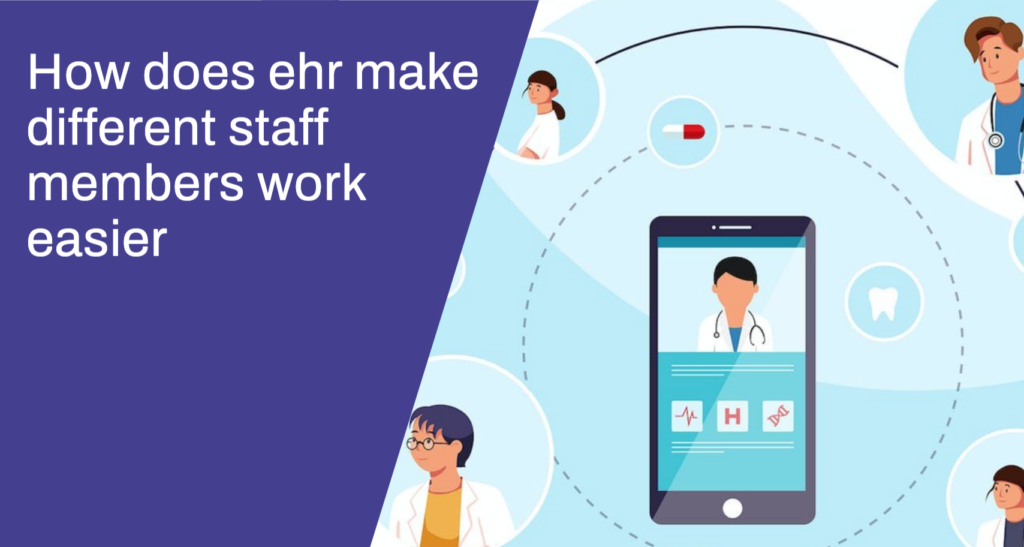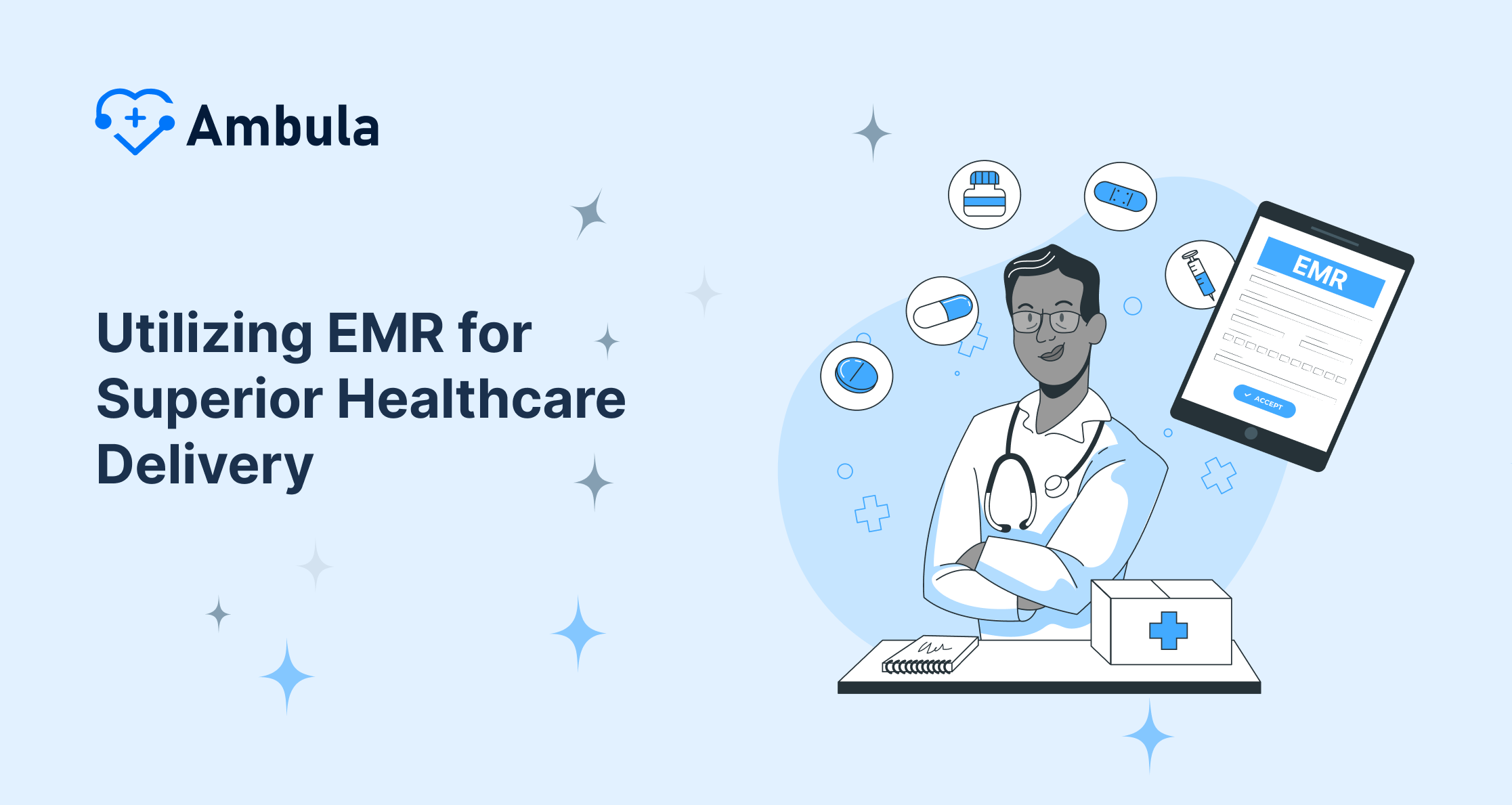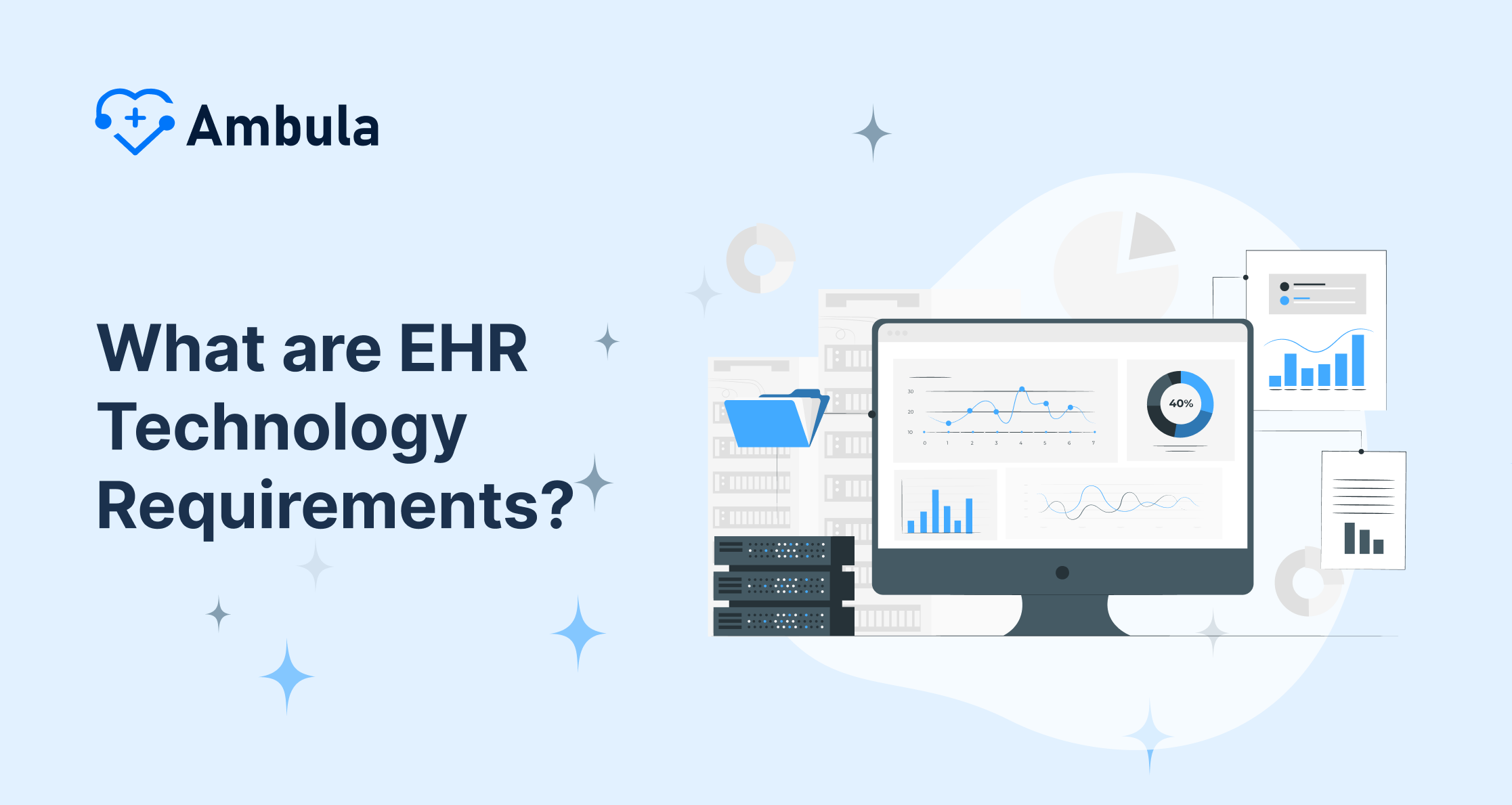
The modern healthcare landscape is undergoing a paradigm shift, driven by a growing emphasis on efficiency, data-driven decision-making, and patient-centered care. In the midst of this transformation, one technology stands out: the Electronic Health Record (EHR).
For decades, healthcare relied heavily on paper-based records, riddled with inefficiencies and inaccuracies. Patient information was scattered, communication was fragmented, and workflows were often cumbersome. This not only hindered patient care but also burdened healthcare professionals with mountains of paperwork and administrative tasks.
From the doctor diligently entering notes to the pharmacy technician verifying medication orders, the EHR has touched every corner of the healthcare ecosystem. But how exactly does this digital marvel translate into practical benefits for the diverse staff behind the scenes? This article delves into the hidden superpowers of EHRs, unveiling how they streamline workflows, boost efficiency, and ultimately empower healthcare professionals across various roles to deliver better, faster, and more informed care.
Prepare to witness the EHR metamorphosis through the eyes of doctors, nurses, administrators, pharmacists, lab technicians, and even IT staff. We’ll explore how each role leverages the EHR’s unique capabilities to conquer time-consuming tasks, eliminate redundancies, and collaborate seamlessly for the ultimate beneficiary, the patient. So, fasten your digital seatbelts, and let’s embark on a journey through the transformative world of EHRs and their impact on healthcare workflows.
The ease of accessing and sharing patient history
The use of electronic health records (EHRs) has significantly simplified access to and sharing of patient health histories. In traditional paper-based systems, gaining access to a patient’s complete health history often involved physically searching through numerous files and folders, which was time-consuming and inefficient.
EHRs, on the other hand, store all of a patient’s medical history in one easily accessible location. Information such as past medical conditions, surgeries, allergies, lab results, medication records, and even family history of diseases can be found with just a few clicks. This ease of access has transformed healthcare delivery, making it easier for healthcare providers to make well-informed clinical decisions quickly, even during emergencies when every minute counts.
For doctors and nurses
Doctors and nurses stand at the heart of patient care, juggling meticulous diagnosis, swift decisions, and constant communication. Enter the EHR, their digital ally wielding a magic wand that transforms their daily routines.
Paperwork? Begone! Imagine mountains of handwritten notes replaced by crisp digital entries. EHRs eliminate tedious documentation, freeing up precious time for what truly matters: interaction with patients. Picture a doctor dictating notes directly into the system, ensuring accuracy and avoiding the pitfall of illegible scribbles. (Image of a doctor dictating notes into the EHR system.)
Knowledge at Your Fingertips: No more rummaging through dusty folders. EHRs provide instant access to a patient’s complete medical history, medications, allergies, and test results. A quick glance reveals past diagnoses, treatments, and responses, guiding informed decisions and personalised care.
Communication Symphony: Gone are the days of relying on phone calls and handwritten notes. EHRs facilitate seamless communication between doctors and nurses. Shared progress notes, medication alerts, and real-time updates ensure everyone is on the same page, leading to swift interventions and improved patient outcomes. (Image of doctors and nurses interacting using the EHR system.)
Decision Support, Not Guesswork: EHRs are more than just repositories; they’re intelligent assistants. Built-in tools like drug interaction alerts, order sets, and evidence-based guidelines empower doctors to make informed decisions with every step. Imagine an alert popping up at the point of prescribing a medication that might interact with something the patient is already taking, potentially preventing a dangerous encounter.
Impact of ehr on Lab Technicians and Pharmacists
For lab technicians, EHRs have simplified the process of receiving, processing, and delivering lab test results. In an EHR system, physicians can send electronic lab test orders directly to the laboratory, reducing the risk of errors related to poor handwriting or misinterpretation. It also eliminates the need for manual data entry, thus reducing the chances of input errors.
Once the lab tests are completed, the results are sent electronically back to the physician through the EHR system. This not only speeds up the process, allowing for quicker diagnosis and treatment, but also allows the results to be stored right on the patient’s record, making it easier to track and compare with past results.
For pharmacists, EHRs have improved the efficiency and accuracy of their work significantly as well. Prescriptions are sent directly from the physician’s office to the pharmacy, reducing the risk of errors due to misunderstood handwriting, lost faxes, or miscommunication during phone calls. They can also easily view a patient’s medication history, helping them to identify potential contraindications or drug interactions that can pose dangers to the patient’s welfare.
From paper pushers to workflow wizards
Mountains of insurance forms have been replaced by digital claims submitted in seconds. Patient files are meticulously archived in electronic vaults, accessible with a click. Appointment schedules magically synced across devices, eliminating double bookings and frustrated calls. This is the reality for administrative staff in the EHR era, where tedious tasks get a digital makeover, paving the way for efficiency and accuracy.
Billing and Coding Blitz: No more deciphering handwritten notes and sifting through paper records. EHRs automate coding tasks, ensuring accurate claim submission and minimising denials. Built-in rules and prompts guide coders, leaving less room for errors and delays. Imagine the relief of saying goodbye to stacks of forms and hello to automated claim processing. (Image of an administrator inputting data into an EHR system with a satisfied smile.)
Scheduling Symphony: Gone are the days of juggling sticky notes and phone calls. EHRs streamline appointment booking, allowing patients to schedule online at their convenience. Built-in reminders and waitlist features optimise patient flow, reducing administrative burden and eliminating frustrating “no-shows.” Picture a smooth, digital ballet of appointments, orchestrated by the EHR.
Data-Driven Decisions: Administrative staff are no longer in the dark. EHRs provide real-time insights into patient demographics, appointment trends, and resource utilization. With these data nuggets at their fingertips, they can make informed decisions about staffing, scheduling, and resource allocation. Imagine generating reports with a click, revealing patterns and areas for improvement in seconds.
Patient Engagement Powerhouse: EHRs empower patients to take control of their health. Patient portals allow them to book appointments, access test results, and refill medications—all online. This reduces administrative calls and frees up staff time for other tasks. Imagine a streamlined digital dialogue between patients and the healthcare system, fostered by the EHR.
The impact of EHRs on administrative staff goes beyond these core benefits. They can focus on tasks that require human insight, like resolving insurance issues and providing personalised support to patients. Imagine an administrator using their data analysis skills to identify patients at risk of missing appointments and taking proactive steps to prevent it. This glimpse into the future shows how EHRs can transform administrative staff into data-driven workflow wizards, ultimately improving the patient experience.
IT Staff’s Superpower Injector
Imagine You’re the IT maestro in a healthcare symphony, juggling servers, patching code, and ensuring data flows like a well-oiled IV. Sounds familiar? But fear not, weary tech warrior, for a powerful ally has arrived: the Electronic Health Record (EHR). It’s not just a fancy patient chart; it’s your digital Excalibur, ready to slash inefficiencies and shield your sanity.
Data Fortress Under Lock and Key
EHRs are the Fort Knoxes of patient data. Gone are the days of paper charts waltzing off with sensitive information; now, data is encrypted and safely tucked away behind multi-layered firewalls. HIPAA compliance? Just another day at the office for your EHR. (Think of it as a knight in shining armour, guarding the kingdom of patient privacy.)
Interoperability: Data’s Bridge Over Troubled Waters
Remember the frustrating silos of old, where data languished in isolated systems? EHRs are intergalactic bridges, seamlessly connecting disparate platforms and allowing information to flow freely across departments. (Picture a majestic data bridge, spanning the chasm between admissions, billing, and clinical care.)
Patching Gremlins with a Click
Software updates, once harbingers of system-wide meltdowns, are now mere blips on the EHR radar. Automated patching and rollouts ensure your systems stay up-to-date and secure, with minimal downtime and zero hair-pulling moments. (Imagine a friendly robot patching code with a wrench and a mischievous gremlin cowering in the corner.)
Predictive Proactive Power
EHRs are more than just data repositories; they’re crystal balls for IT clairvoyants. Built-in AI and machine learning tools analyse system behaviour, predict potential issues, and even suggest proactive solutions. Think of it as a futuristic diagnostic scanner, identifying system hiccups before they become full-blown emergencies.
Automated Tasks
Remember the endless hours spent on repetitive tasks like user provisioning and report generation? EHRs automate these mundane chores, freeing you to focus on the strategic stuff, like optimising workflows and implementing cutting-edge technologies. (Picture a robotic arm tirelessly stamping approvals while you strategize with a futuristic headset.).
The Road to Efficiency Isn’t Always Smooth: Addressing EHR Adoption Challenges
While EHRs undoubtedly offer a myriad of benefits, their path to integration is not without its bumps. Here, we confront some common challenges healthcare institutions face during EHR adoption:
- 1. User Interface Complexity: EHRs can be labyrinthine for the uninitiated. Interfaces laden with buttons, menus, and jargon can intimidate and frustrate users, leading to resistance and decreased productivity. To conquer this beast, intuitive design, comprehensive training, and user-centred customisation are essential. Imagine an EHR interface that adapts to each user’s role and preferences, guiding them through tasks with gentle nudges and helpful context.
- Data Migration Headaches: Moving mountains of legacy data into a new system can be a delicate dance, fraught with risks of errors and inconsistencies. Inadequate planning, outdated formats, and incompatible systems can transform this migration into a migraine. To navigate this minefield, thorough data mapping, robust cleansing strategies, and comprehensive testing are key. Imagine a dedicated data migration team equipped with specialised tools and unwavering patience, ensuring every patient record finds its rightful place in the EHR.
- Workflow Disruption: Introducing an EHR is like bringing a new conductor to an existing orchestra. Disruption is inevitable as established workflows are dissected and reassembled. This can lead to temporary dips in productivity and frustrations among staff. To smooth the transition, extensive communication, phased implementation, and ongoing support are paramount. Imagine a conductor patiently working with each section of the orchestra, providing individual and group tutorials, and gradually harmonising the workflow into a beautiful symphony of efficiency.
- Cost Considerations: Implementing and maintaining an EHR system can be a significant financial investment. Hardware, software, training, and ongoing support all contribute to the cost equation. To ensure a sound financial footing, thorough cost-benefit analysis, creative financing options, and strategic resource allocation are crucial. Imagine a financial architect meticulously designing a budget that balances the costs of EHR implementation with the long-term savings in efficiency and improved patient care.
- Security and Privacy Concerns: EHRs are treasure troves of sensitive patient data, making security and privacy paramount. Data breaches and unauthorised access can have devastating consequences. To build a fortress of trust, robust security protocols, regular audits, and ongoing staff training on data privacy are non-negotiable. Imagine a vigilant digital guardian standing sentry over the EHR, constantly scanning for threats and implementing countermeasures to ensure the data’s integrity and privacy.
While challenges exist, remember that each hurdle overcome strengthens the foundation for a future where EHRs seamlessly empower healthcare professionals and enhance patient care. By approaching adoption with meticulous planning, open communication, and a commitment to continuous improvement, healthcare institutions can transform these obstacles into stepping stones on the path to a truly efficient and effective healthcare ecosystem.
Dr. Sarah used to spend hours deciphering illegible handwriting and battling lost paperwork. Now, her EHR automatically generates and stores detailed patient notes, saving her precious time for consultations and building stronger patient relationships. “I get home earlier now, and I’m less stressed because I know everything is documented and easily accessible,” she says.
Dr. Sarah, a busy family physician
In a rural clinic, Dr. Patel utilises the EHR’s remote monitoring capabilities to connect with patients miles away. He can review vital signs transmitted from wearables, adjust medications remotely, and offer timely consultations, bridging the geographical gap and providing essential care. “It’s amazing how I can reach patients who wouldn’t have access to care otherwise,” Dr. Patel beams.
Dr. Patel, the remote care champion
These are just a glimpse into the transformative power of EHRs. From doctors gaining back precious time for patient care to administrators boosting efficiency and labs ensuring lightning-fast results, the impact is tangible and far-reaching. As technology continues to evolve, the EHR’s capabilities will only expand, further enriching the lives of healthcare professionals and, ultimately, the well-being of patients.
The Exciting Future of EHRs in Healthcare
The future of EHRs is brimming with exciting possibilities, fueled by innovative technologies like AI, machine learning, and wearable devices. These advancements promise to further streamline tasks, improve care delivery, and push the boundaries of healthcare efficiency.
- AI-powered clinical decision support: Imagine an EHR that acts as a digital Sherpa, guiding healthcare professionals with real-time insights and evidence-based recommendations. AI algorithms could analyse vast medical datasets, suggesting personalised treatment plans, flagging potential complications, and even predicting patient outcomes. This level of intelligent support could revolutionise clinical decision-making, enhance accuracy, and potentially save lives.
- Machine learning for automated tasks: Repetitive tasks like appointment scheduling, medication reminders, and data entry could become a thing of the past. Machine learning algorithms trained on EHR data could learn to anticipate patient needs, schedule appointments intelligently, refill medications automatically, and even generate personalised health reports. This shift would free up valuable time for healthcare professionals to focus on complex tasks and patient interactions.
- Wearable devices and continuous monitoring: Wearables integrated with EHRs could provide a constant stream of vital signs and biometric data, giving healthcare professionals a real-time window into a patient’s health. Imagine early detection of disease through subtle changes in heart rate, blood pressure, or sleep patterns. This continuous monitoring could revolutionise preventive care, allowing healthcare teams to intervene proactively and improve patient outcomes.
- Chatbots and virtual assistants: Imagine a world where patients’ basic questions and inquiries are handled by empathetic and informative chatbots powered by AI. This would free up nurses and doctors to focus on complex cases and more demanding tasks while ensuring patients receive timely and accessible information.
- Personalised medicine and predictive analytics: AI and machine learning could analyse mountains of patient data to identify individualised risk factors, genetic predispositions, and optimal treatment pathways. This level of personalised medicine could pave the way for tailored preventative measures, targeted therapies, and improved overall health outcomes.
These are just a few examples of how AI, machine learning, and wearable devices could work in tandem with EHRs to transform healthcare. As these technologies mature and integrate seamlessly, we can expect a future where healthcare is more efficient, proactive, and personalised than ever before.
Remember, the journey towards this future requires not only technological advancements but also ethical considerations, data security measures, and ongoing dialogue between healthcare professionals, patients, and technology developers. But with careful planning and responsible implementation, these innovations have the potential to unlock a new era of healthcare, enriching the lives of both patients and healthcare providers.
Conclusion
Data migration hurdles, user interface complexities, and ensuring the ethical integration of AI are stepping stones on the path to widespread adoption. But by embracing open communication, continuous training, and a commitment to data security, these challenges can be overcome.
Ultimately, the true value of EHRs lies not in technology alone but in their potential to empower healthcare professionals. Doctors gain back time for meaningful patient interaction, nurses collaborate seamlessly, and administrators optimise resources with data-driven insights. This empowered workforce translates to a transformed healthcare landscape, where efficiency enhances care, innovation drives progress, and the patient, as always, remains the central melody in the ever-evolving symphony of healthcare.
So, let us embrace the EHR revolution, not with fear of disruption but with eyes wide open to the possibilities. In its essence, it is not just a technological marvel but a promise of a future where healthcare thrives on empowered professionals, streamlined workflows, and ultimately, better care for all.




